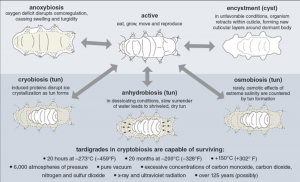Morocco is located in Northern Africa, and borders both Algeria and Western Sahara. It neighbors Spain, only separated by a channel of water called the Strait of Gibraltar. Morocco is the result of multiple cultural influences due to its unique history. This unique history involves Morocco’s association with other global communities. Therefore, Moroccan food is an interesting blend of different cultures such as Arabic, French, Northern African and Spain.
Harira is a dish native to Morocco consisting of lentils, chickpeas, and a tomato base. As well as multiple seasonings, including but not limited to: lemon, cinnamon, cilantro, parsley and ginger. Usually it includes a meat, such as beef or lamb. However, I choose this dish because it has the capacity to be vegetarian. Interestingly, there is not one way to prepare harira, as families have different recipes passed down from generation to generation.
This dish takes a long time to prepare. First and foremost, the chickpeas must be soaked overnight. Then fresh cilantro and parsley have to be cleaned and separated from their stems. Next, the cilantro and parsley should be finely chopped. The tomato base is made by pureeing tomatoes in a food processor or mashing them together. If meat is added to the recipe, it must be cooked before compiling it into the larger soup pot. The larger soup pot should first consist of the tomato base, chickpeas and the seasoning. Then meat should be added, followed by water and lentils. At the last segment of cooking, rice or vermicelli should be added. Flour premixed with water can be added in order to thicken the soup.
Islam is the prominent religion in Morocco. In Islam, there are five pillars of faith : Shahadah, Salat, Zakat, Sawm, and Hajj. The pillar known as Sawm takes place during a holy month called Ramadan. During this holy month, Muslims fast from dawn till sunset for 29-30 days. The meal that is eaten before dawn is called Suhoor. The meal after sunset is called Iftar. Harira is a significant dish in Moroccan culture because it is used to break fast at Iftar. However, Harira it is not eaten solely during Ramadan, and is also popular during the winter time.
This dish is reflective of how food is consumed in Morocco, as the substance of dish varies due to seasonal vegetables. This indicates that they are conscious of what they consume, and how it tastes. Furthermore, this is an indication that they do not mass produce food. In 2016, the CDC issued a report stating how currently there isn’t any genetically modified food in the country utilized for human consumption. This includes genetically modified seeds. However, genetically modified food is fed to animals, such as genetically modified corn. In my research, I discovered that the United States is the number one importer of such genetically modified animal food to Morocco. Furthermore, Morocco’s connections and dependence upon the European Union plays a huge role as to what type of foods it receives. Despite not eating genetically modified food, Morocco has a booming scientific community researching the effects of genetically modified food, and it’s place in a growing global community.
References :
https://www.thespruceeats.com/classic-moroccan-harira-soup-2394920
https://theculturetrip.com/africa/morocco/articles/a-brief-history-of-moroccan-harira/
https://moroccotravelblog.com/2009/04/21/harira-traditional-moroccan-soup/
https://www.peacecatalyst.org/blog/2018/6/6/ramadan-101-what-is-iftar
http://www.bbc.co.uk/religion/religions/islam/practices/fivepillars.shtml


